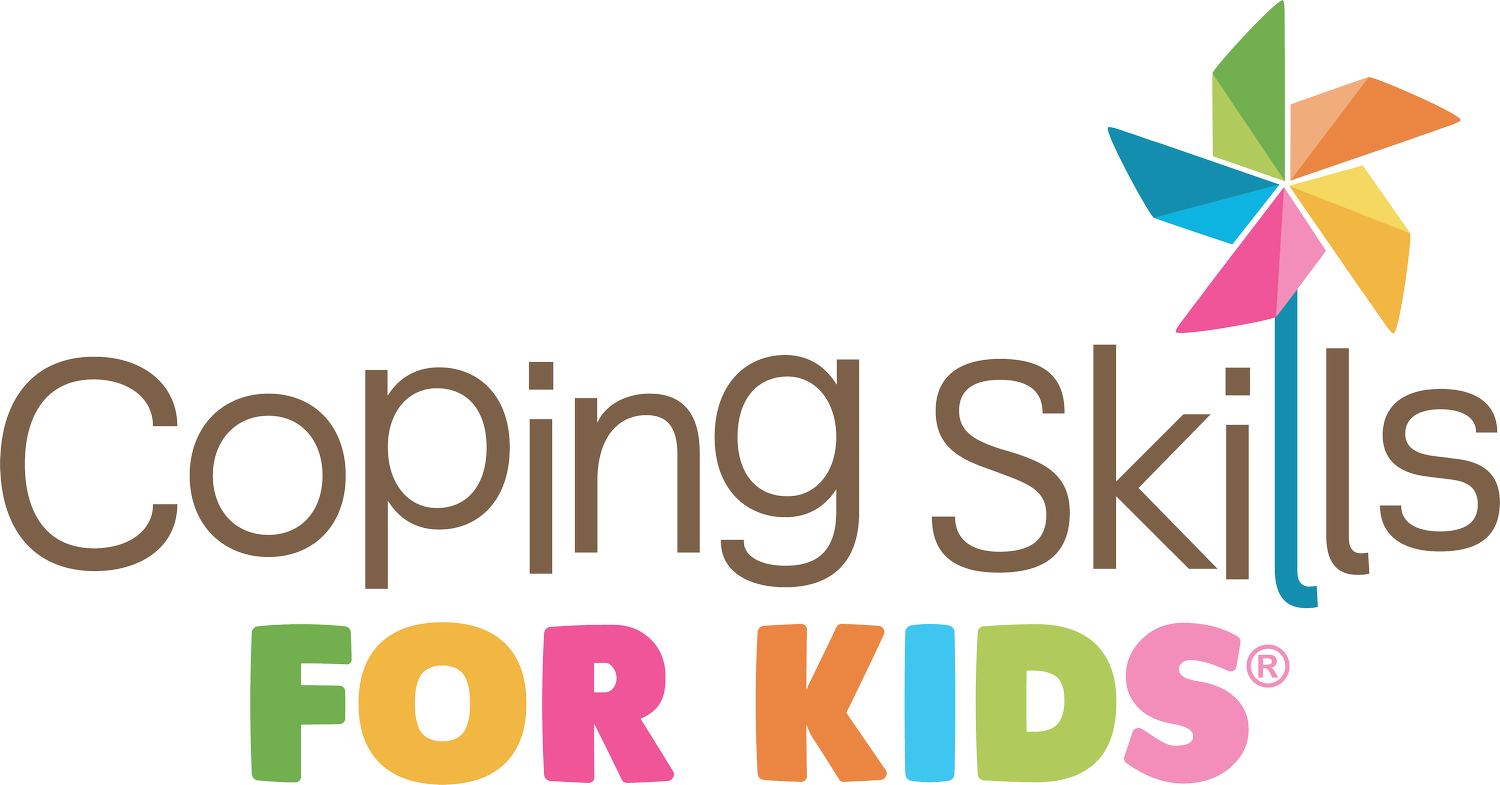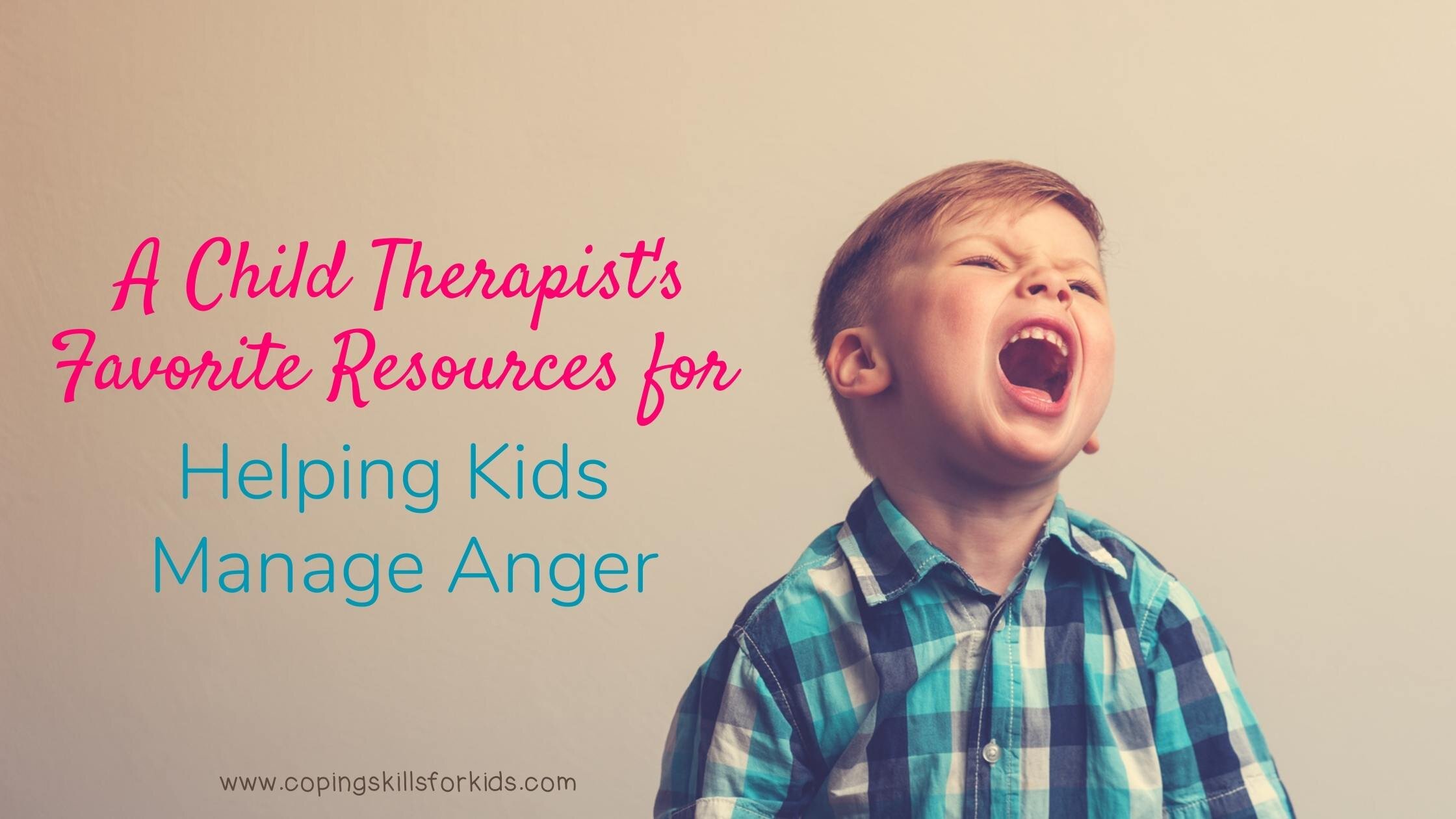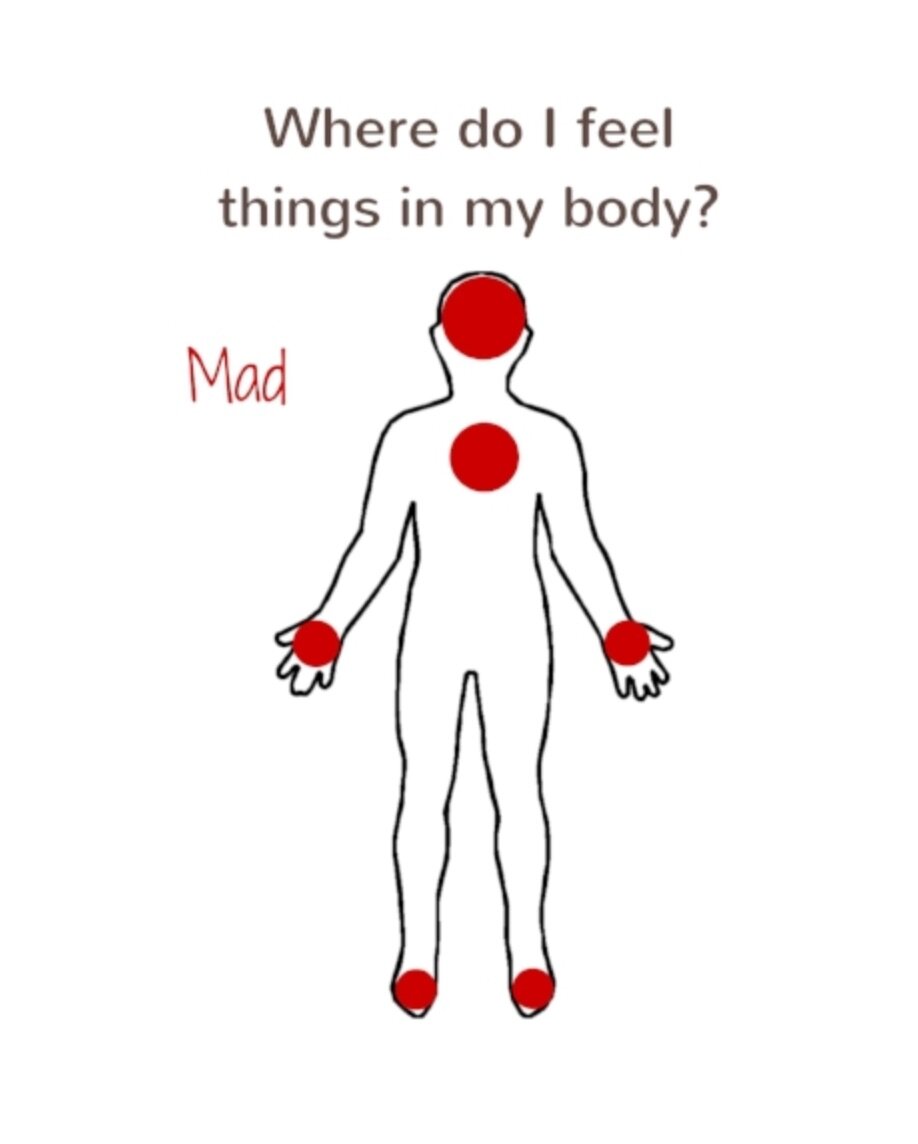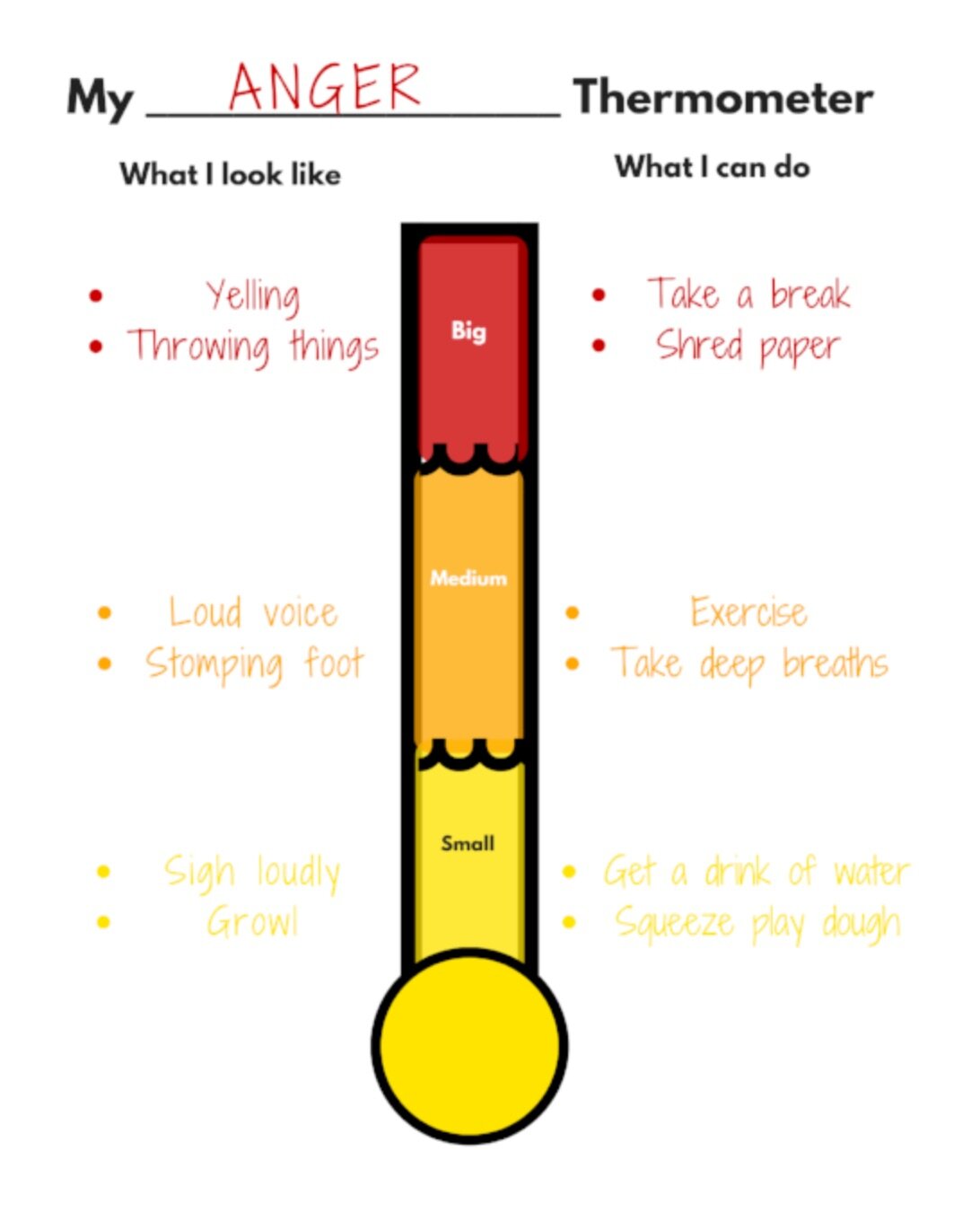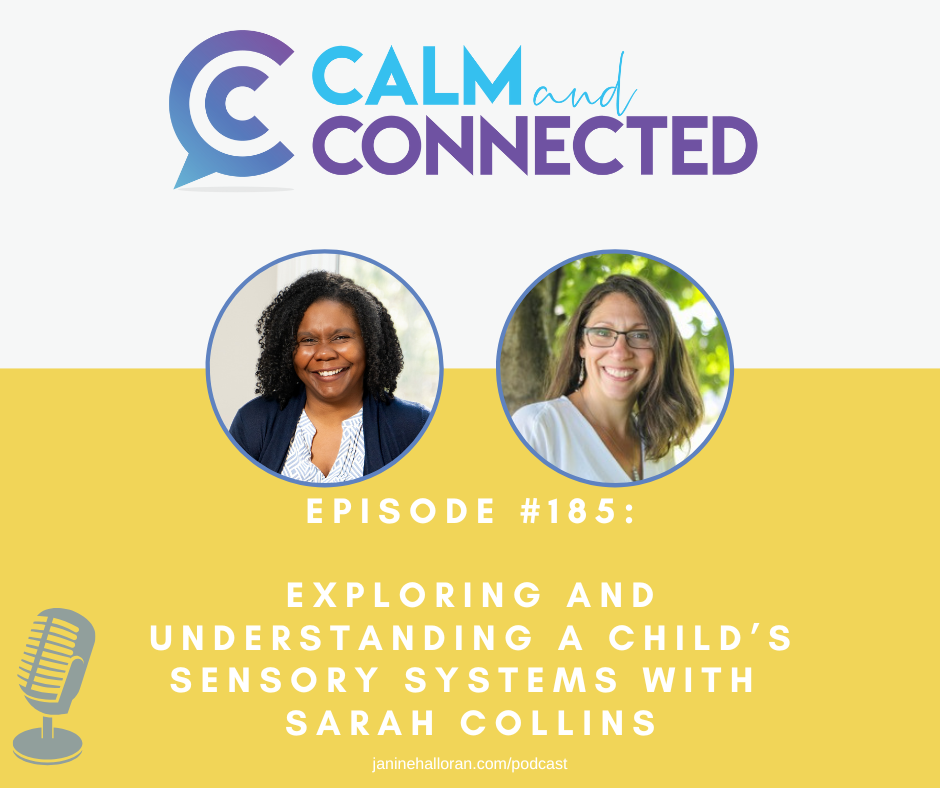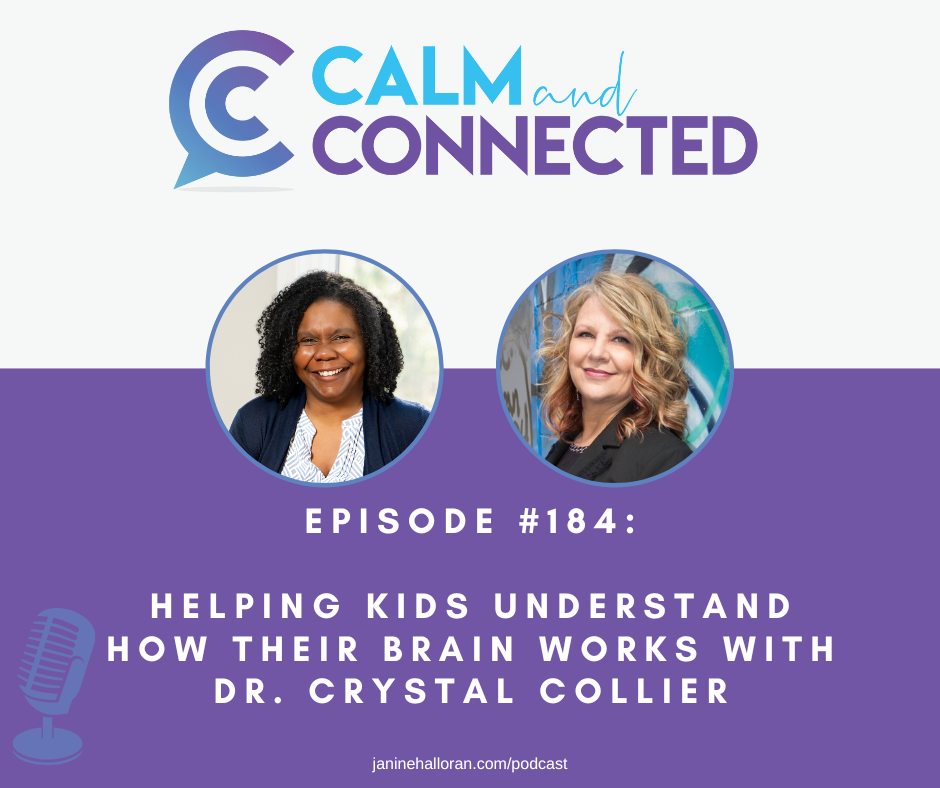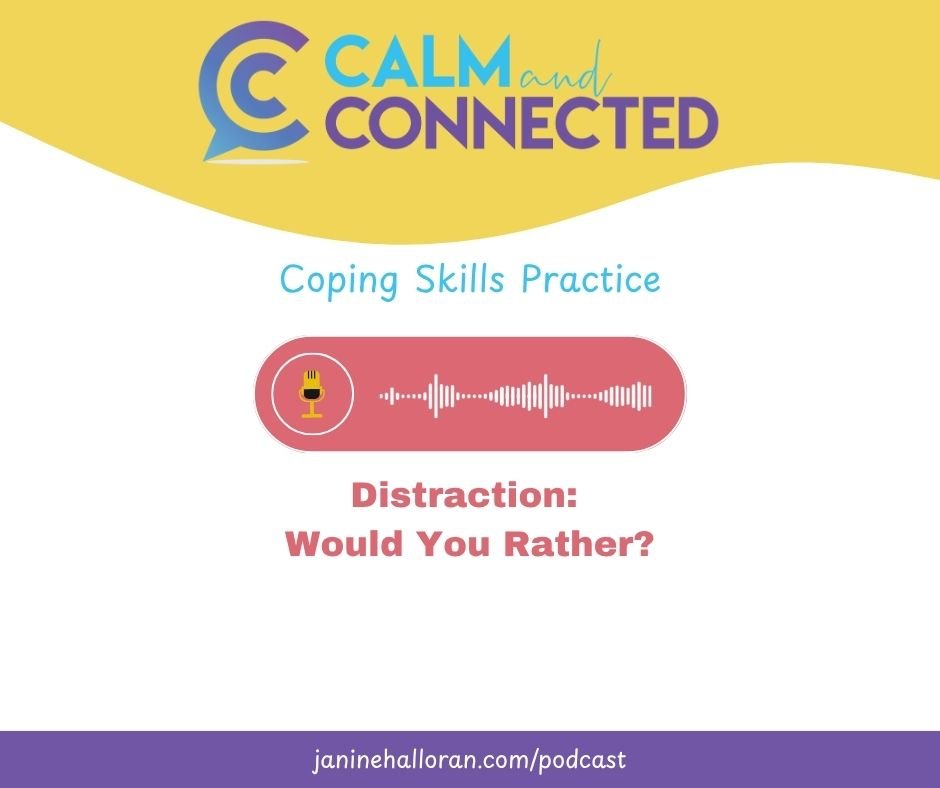Inside: Kid-friendly coping skills used to help manage anger, including safe ways to express anger, books to read and videos that can help.
This post contains affiliate links. Learn more.
It’s starting again, as usual, right after your son gets off the school bus. He is frustrated from things that happened during the day, and now he’s yelling and stomping around the house. You’re feeling overwhelmed and don’t know what to do next.
How do you help an angry child?
Here’s a collection of the best tools and tips to teach children how to manage their anger in safe and healthy ways. Let's start with some quick, safe ways to help kids express those feelings.
Quick Ways to Help Kids Express Their Anger
Rip paper
Pop bubble wrap
Squish playdough
Wrap your arms around yourself and squeeze
Write a letter to someone
Jump on a trampoline
Do wall push-ups
Write down what’s bothering you and rip it up
Squeeze a stress ball
Talk about it
Scribble on paper and crumple it up
Do jumping jacks
Put the palms of your hands together, push and release
Do stretches
Do a hookup - see it in action on Youtube!
Looking for more quick ideas to help kids express their anger?
Stop sensory meltdowns by hanging upside down
5 simple ways to help children calm angry feelings
10 more ways to help kids manage anger
A Different Way to Respond When Your Child is Aggressive
Remember that it's OK to be angry
We need to help our kids understand and expect that they will experience a variety of feelings as they go through life, including anger. It’s normal to feel angry at times. It’s what you do with those feelings that matter.
Here’s a great reminder from Imperfect Families that anger is a feeling too.
Keep talking to a minimum
When a child is in fight, flight or freeze mode, they can’t process information as well as when their body is in rest and digest mode. This is not a teachable moment, and they can’t take in a lecture at this point. Your goal is to get them through this rough moment. It’s best to keep talking to a minimum. When you do speak, make sure you use a neutral, calm, and quiet tone. Keep it short and repeat the same phrase. Repeating it is helpful because they aren’t processing information and words as they usually would. Repetition makes it more likely that they’ll hear what you are saying.
Phrases that you can say at that moment:
“I’m here for you.”
“I love you.”
“I want to help you.”
“Let me know when you’re ready.”
“You are mad; I get it.”
“I understand.”
Looking for some more inspiration for phrases to say? Check this out:
26 Phrases to Calm and Angry Child
Get them to a calm, safe spot
When some kids get big feelings, they destroy items around them - rip books, throw toys, etc. If that’s the case for your child, it may be helpful for you to set up a safe spot where kids can go when they are angry. In that space, take everything out that can be destroyed or thrown that might injure someone or damage property. If you have more than one floor, set up a safe spot on each level of your home.
If you aren’t in the safe spot when your child is dealing with big feelings, move harmful objects out of the way and try to get them to that safe place.
It may make sense to set up their room as a safe place too. We found this helpful when our son was dealing with a lot of angry feelings. We moved his toys and his bookshelf to a different room in the house so he could still play with them. The items that stayed in his room were those things that wouldn’t hurt him or us. We did this to keep everyone, including him, safe. And as time went on, and he had better control of his emotions, we were able to add things back to his room.
How to Make a Calm Down Spot at home
Be Preventative
One of the best things you can do is work on teaching coping skills kids can use before things escalate to epic proportions. The trick is practicing when they are in a calm and relaxed mood, not in the moment when they are angry.
Identify Triggers
Start by talking about what’s making them angry. Help them identify those triggers, so you both know for the next time. Is it a particular school subject that makes them frustrated? Perhaps being hungry or thirsty? Are their specific noises or locations that are frustrating?
help kids identify where they feel angry in their body
Sometimes, kids don’t know they’re angry until after the explosion has happened. Help them identify the signs their body gives them that they are feeling angry. Over time, they’ll start to recognize that feeling and ideally use a coping skill before things get too overwhelming.
Explore what other emotions they may be feeling
When kids are angry, there are usually other feelings that they are experiencing too. But anger is easy to see and often hides different feelings that lie below the surface. It’s sometimes referred to as the “Anger Iceberg.” It takes a bit of time to figure it out, but when your child is in a calm place, talk about what other feelings may be hiding underneath their anger.
Read more about the anger iceberg here.
Identify and practice coping skills
Now that they know what causes those big feelings and how to identify them, help them figure out ways to deal with those feelings in safe and healthy ways. Go through the coping skills checklist and have kids check off the skills that work for them, cross off the ones that don’t and circle the ones they want to try.
Identify one coping skill your child would like to try. Take a few minutes during the week and have them practice a coping skill they may be able to use next time. For example, if they are going to try using shapes for deep breathing, have them practice before, so they know how it feels. The idea is to have them practice, so they know what it feels like to do it when they are calm.
Using coping skills to deal with big feelings will not go perfectly every time. Learning to manage anger is a work in progress. Little by little, with practice and time, kids will get better at it. Encourage them when they make safe and healthy choices. When they don’t, continue to work with them to figure out better steps they can take the next time.
Use a Feelings Thermometer
Using a feelings thermometer can help kids make the connection between their feelings and their coping skills. Here’s how you can make an anger thermometer.
How to Make an Anger Thermometer:
Have the child pick out three colors, one for each section of the thermometer and color it in. Then talk about each section.
Ask what it looks like when they are just a little angry, at the bottom of the thermometer. Do they sigh loudly, growl, etc.?
Then move on to the middle section of the thermometer. If they are medium-sized angry, what does that look like? Does their voice get louder? Do they stomp their feet, etc.?
Finally, talk about what it looks like when they are experiencing big anger at the top of the thermometer. What does that look like? Is it yelling, throwing things, etc.?
It isn’t always easy for kids to do this. If they are having a hard time identifying what the behaviors were, I tell them what I noticed the last time I saw them get angry. Or, if I haven't seen them angry, I'll give them a prompt to help them, like “When some kids get angry, they yell, is that something you do?”
Once we go through and identify behaviors on the thermometer, then we work on identifying coping skills they can use to calm down. Some examples include getting a drink of water, taking deep breaths, shredding paper, or taking a break.
Make sure they have coping skills that will help them at each level of anger. It’s essential to have a variety of coping skills for each level because not all coping skills will work all the time. For some kids, taking a drink of water can help calm them down when they are just slightly angry. However, when they are furious, getting a drink of water won’t help. They need to do something different at that point, like take a break.
Read Books About Anger Together
When Sophie Gets Angry, Really, Really Angry by Molly Bang Poor Sophie has a hard time managing her anger when she has to share gorilla with her sister. It’s a visually appealing book to show how big her feelings get and how it looks when she calms down again.
When I Feel Angry by Cornelia Maude Spelman This is part of “The Way I Feel” series. It explains how different things can make you angry, and that feeling angry is an expected part of life, but it’s what you do when you’re feeling that way that matters.
Cool Down and Work Through Anger by Cheri J. Meiners M.Ed. Another great book that talks about how anger affects your body and suggesting safe ways to express yourself.
Angry Octopus by Lori Lite and Max Stasuyk A great book that actually is a progressive muscle relaxation and deep breathing script for kids. It’s wonderful!
Don’t Rant and Rave on Wednesdays by Adolph Moser It mentions the consequences of having unchecked anger, and acknowledges that adults struggle with this too. A large part of the book explains different strategies kids can use to express anger in a safe way, which I think is fantastic.
How to Take The Grrrr Out of Anger by Elizabeth Verdick and Marjorie Lisovskis I love using this book for kids who are having a hard time managing being angry. I typically read one chapter at a time with the kids and work on some of the strategies listed in the book.
What to Do When Your Temper Flares by Dawn Huebner This book has lovely illustrations and goes through “anger dousing” methods.
Happiness Doesn’t Come from Headstands by Tamara Levitt. This is a beautifully illustrated book all about growth mindset and resilience. Leela wants to do headstands and is getting frustrated, and believes the only way she can be happy is if she does headstands. With the help of a friend, she shifts her focus from what she can’t do to what she can and focuses on the journey, not the singular goal is doing a headstand.
The Secret to Clara’s Calm by Tamara Levitt. This is another beautifully illustrated book that demonstrates the power of mindfulness in managing big feelings. Clara has a bad temper and has big reactions to small problems, but then that leads to kids not wanting to be around her anymore. She works on learning how to be mindful and manage her big feelings with the help of a bird named Brodhi.
Chillax!: How Ernie Learns to Chill Out, Relax and Take Charge of His Anger by Marcella Marino Craver This is a graphic novel, perfect for the tween set.
Keep Yourself Calm
It’s common for parents to struggle with staying calm when their child is angry. As a mom, I know that’s tough, especially when your child is having a difficult time. But it’s important to learn to do it. You have to get yourself calm before you can help your child. One of the best ways to help your child is to make sure you stay calm yourself.
Use Self-Talk
Here are some phrases that may help you as you are working with your angry kid:
They’re having a hard time, not giving me a hard time.
Share my calm, don’t join their chaos.
I am in charge of staying calm, no matter how my child is acting and behaving.
All feelings are OK. My job is to help my kid manage them.
I can remain calm, and be a good example for my child.
Be the thermostat, not the thermometer.
TAKE Deep Breaths
If you’re getting upset and about to blow up, try deep breathing. I know, it sounds hokey, but it makes a difference. When you are feeling overwhelmed, your body can go into fight, flight, or freeze mode, but in situations like these, you want to stay in rest and digest mode. By taking deep breaths, you’re signaling your body to go back to rest and digest mode. Expand your belly as you inhale, and contract your belly as you exhale. Try taking several deep breaths before you take steps to intervene.
Use a grounding technique
If you’re overwhelmed, sometimes it helps to do a grounding exercise to calm yourself down.
Say the alphabet and numbers together (A-1, B-2, C-3, etc…)
Squeeze a stress ball
Take a sip of cold water
Count by 7’s
FIND your support system
Know that you are not alone. Read what this mom has to say about parenting an angry child. If you don’t have a support system, then it’s time to find one. Here are some ideas for both in person and online support groups to help you.
In Person Support:
There are lots of places you can get support in person. One resource I love is the National Alliance on Mental Illness. They offer Family Support Groups, which meet regularly. They also offer a 12 week class for parents by parents, called Family to Family Support. Search for your local NAMI chapter here.
Having support for your child outside of your family can be a lifesaver. Talk to the school, teachers and coaches to help support your child during a difficult time. Sharing knowledge about what strategies work, and how you child responds in different environments is invaluable information.
You can also seek help from a licensed therapist to help support you. It's great to have someone to talk through the tough situations you are experiencing. Some kids also benefit from seeing their own therapist. Read this to get a little more information about when you should seek outside help for your child.
As your son continues to stomp and growl, you take a few deep breaths and say to yourself “Be the thermostat, not the thermometer.” Then, in a calm voice, you say to your son ”I’m here to help. I love you.”
